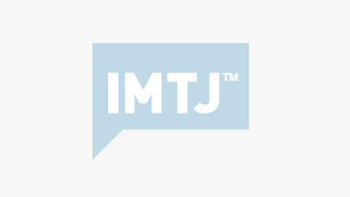A new report ‘The future of healthcare in Europe’ from the Economist Intelligence Unit and sponsored by pharmaceutical group Janssen, argues that across Europe, healthcare is barely managing to cover its costs. Not only are the methods for raising funds to cover its costs inadequate, but also, of even greater concern, the costs themselves are set to soar.
A new report ‘The future of healthcare in Europe’ from the Economist Intelligence Unit and sponsored by pharmaceutical group Janssen, argues that across Europe, healthcare is barely managing to cover its costs.
Not only are the methods for raising funds to cover its costs inadequate, but also, of even greater concern, the costs themselves are set to soar. According to World Bank figures, public expenditure on healthcare in the EU could jump from 8% of GDP in 2000 to 14% in 2030 and continue to grow beyond that date. The overriding concern of Europe’s healthcare sector is to find ways to balance budgets and restrain spending. Unless that is done, the funds to pay for healthcare will soon fall short of demand.
The financial meltdown is being caused by two interconnected trends: the ageing of the population and the parallel rise in chronic disease. Those financial burdens are being exacerbated by the rising cost base of medical technologies. On the positive side, the prospects for vanquishing many diseases are improving rapidly with the mapping of the genetic make-up of people who develop cancer, diabetes and heart disease. This prospect makes it all the more imperative to agree on a survival strategy for Europe’s healthcare systems.
The basic problem is the spiralling cost of healthcare, which is expected to continue. European governments and other payers are trying to slow that upward spiral, but they are far from agreeing how best to do so. A key question is how healthcare systems can be redesigned without damaging the foundations upon which they were originally built. Europe’s healthcare system is paid for by the population at large, with the risks of medical expenditure essentially pooled. Most European citizens agree with this shared-risk principle and would resist any efforts to change it and thereby remove the promise of universal healthcare coverage. However, the financial contributions required for healthcare have risen steadily, to the point where governments realise that further increases are no longer possible or politically acceptable. Yet the rise in the cost of healthcare systems continues to outstrip economic growth and shows no sign of slowing down.
The Economist Intelligence Unit interviewed 28 leading healthcare experts between December 2010 and March 2011. Each expert was asked to give his or her hopes, fears and predictions for Europe’s healthcare in the year 2030. This report is based largely on their comments, detailing the factors driving the fiscal crisis in healthcare and the major forecast trends for the next two decades. The analysis of past trends is, in turn, the basis for five scenarios for healthcare in 2030.
Healthcare costs are rising faster than levels of available funding. The rising cost of healthcare cannot be met with current levels of public funding, raised via taxation and insurance. The main drivers of rising healthcare costs in Europe are:
• Ageing populations and the related rise in chronic disease.
• Costly technological advances.
• Patient demand driven by increased knowledge of options and by less healthy lifestyles.
• Legacy priorities and financing structures that are ill suited to today’s requirements.
The future of healthcare will be shaped by seven separate, but interconnected, trends-
• Healthcare spending will continue to rise, not only because of inflationary drivers, but also because of growing recognition by policymakers that improved health is linked with greater national wealth.
• Keeping the universal healthcare model will require rationing of services and consolidation of healthcare facilities, as public resources fall short of demand.
• General physicians will become more important as gatekeepers to the system and as co-coordinators of treatment for patients with multiple health issues.
• More effective preventive measures and fundamental lifestyle changes will be promoted to encourage healthy behaviour.
• European governments will need to find a way to improve collection and transparency of health data in order to prioritise investment decisions.
• Patients will need to take more responsibility for their own health, treatment and care.
The report identifies five extreme scenarios for European healthcare in 2030:
• Technology triumphs and cures chronic disease, while e-health takes a prominent role in the management of healthcare.
• European nations join forces to create a single pan-European healthcare system.
• Preventive medicine takes precedence over treating the sick.
• European healthcare systems focus on vulnerable members of society.
• European nations privatise all of healthcare, including its funding.
The five scenarios make clear that, although there may be great debate across Europe on the details of healthcare reform, what is needed most is adaptability. The current debate is driven in large measure by self-interested factions, such as insurers, doctors and government bureaucracies. Over time, citizens may succeed in shifting the discussion so that it focuses where it should: on the best ways to maximise the health and wellbeing of Europe’s population.








 ©2024 All rights reserved LaingBuisson
©2024 All rights reserved LaingBuisson 


